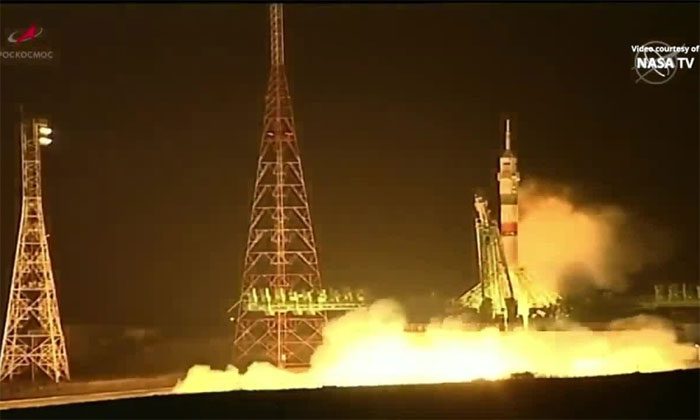This morning, an uncrewed Soyuz spacecraft launched to the International Space Station to replace a spacecraft that experienced a coolant leak.
Video: NASA/Roscosmos
The launch took place at 3:24 AM local time on February 24, which is 7:24 AM on the same day in Hanoi from the Baikonur Cosmodrome operated by Russia in Kazakhstan. The Soyuz MS-23 rescue spacecraft is scheduled to dock with the ISS on February 25.
“A perfect flight to orbit for Soyuz MS-23! The vehicle will bring back Russian cosmonauts Sergey Prokopyev and Dmitry Petelin, along with NASA astronaut Frank Rubio (Expedition 69 crew) to Earth later this year,” said NASA spokesperson Rob Navias during the live commentary of the launch.
The launch and arrival of the new Soyuz occurred during a very busy week for ISS activities, as SpaceX’s Crew-6 Crew Dragon spacecraft is also scheduled to launch four astronauts to the ISS for NASA on February 27, expected to arrive about 24 hours later.
Troubles for the three-member Expedition 69 crew began on December 14 after the Soyuz MS-22 on the ISS experienced a coolant leak, which is believed to have been caused by a collision with a small meteoroid. Although the incident did not pose an immediate threat to the ISS or its operations, Russia’s space agency Roscosmos determined that a new Soyuz was needed to replace the leaking MS-22.

The Soyuz MS-23 departs for the International Space Station (ISS).
The launch schedule for the rescue spacecraft encountered several issues. Initially, Soyuz MS-23 was planned to fly at the end of spring with a full crew, but Roscosmos advanced the schedule to February 19 and decided to launch the vehicle uncrewed. Instead, it carried nearly 430kg of supplies and a stuffed teddy bear to serve as a weightlessness indicator.
The flight of Soyuz MS-23 continued to be adjusted after another coolant leak incident involving the Progress-82 cargo ship on the ISS on February 11. Initially, Roscosmos intended to postpone the launch until March in case the two leaks were related, but ultimately moved the schedule up to February 24. Roscosmos officials determined that the two leaking spacecraft were caused by different meteoroid impacts.
The International Space Station was launched in 1998 during a time when Russia and the United States were enhancing cooperation following the “space race” of the Cold War. To this day, space remains one of the few areas of collaboration between the two countries since Russia’s invasion of Ukraine and its subsequent Western sanctions.


















































